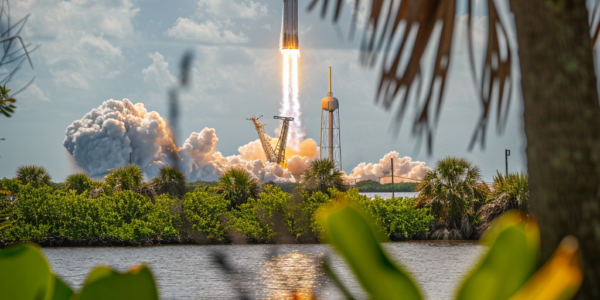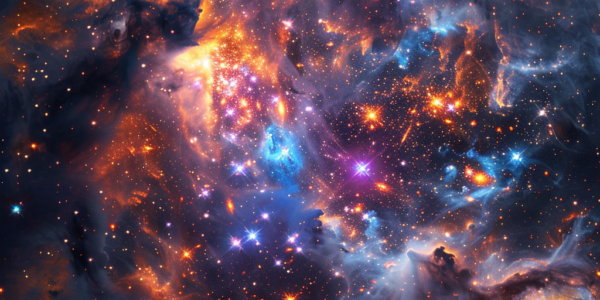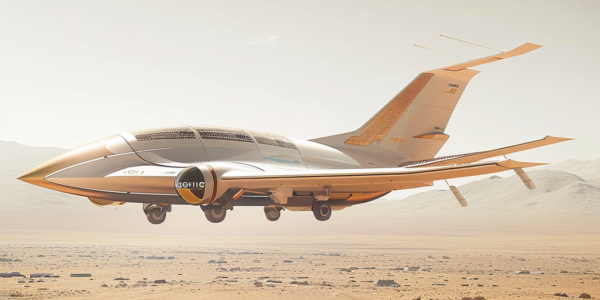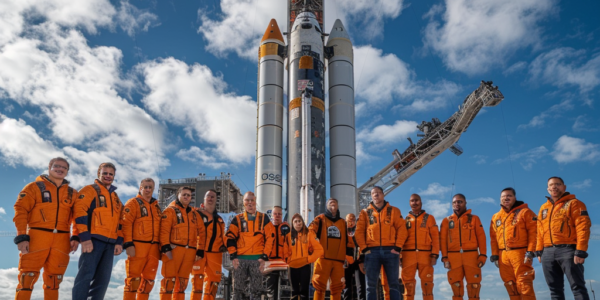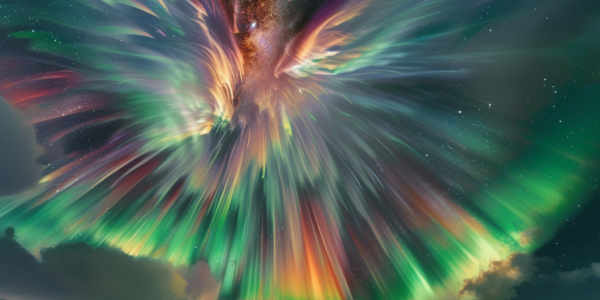Space Coast Sets New Record for Orbital Missions in 2023
The Space Coast in Florida has set a new record for orbital missions in 2023, with a total of 72 launches from both Kennedy Space Center and Cape Canaveral Space Force Station. The pace of launches is expected to increase significantly by the end of 2024, potentially reaching a rate of nearly twice weekly, with as many as 111 missions being possible. As of March 30, 2024, there have been 22 Space Coast launches, with 15 from Cape Canaveral and 7 from KSC. Of these, 21 were conducted by SpaceX (comprising 21 Falcon 9s) and 1 by ULA (utilizing 1 Vulcan). Additionally, there have been 2 human spaceflight missions: Ax-3 and Crew-8.
NASA’s Lucy Spacecraft Makes Groundbreaking Discovery on Small Asteroid System
NASA’s Lucy spacecraft has made a groundbreaking discovery during its mission, revealing unexpected findings during its encounter with the asteroid Dinkinesh. The mission’s success in capturing detailed insights into the asteroid system’s composition and history marks a significant milestone in space exploration, providing valuable data for scientists to unravel the mysteries of celestial bodies.
NASA and SpaceX Announce New Launch Date for GOES-U Satellite
NASA and SpaceX have announced a new launch date for the GOES-U satellite, the fourth and final satellite in the National Oceanic and Atmospheric Administration’s (NOAA) Geostationary Operational Environmental Satellites (GOES) – R Series. The launch is now scheduled for Tuesday, June 25, following the identification of a liquid oxygen leak during routine testing in February, which required repairs and testing of the Falcon Heavy core booster. The GOES-R Series Program, overseen by NOAA, is managed through an integrated NOAA-NASA office, with NASA’s Goddard Space Flight Center handling the acquisition of the spacecraft and instruments.
UC Berkeley to manage $300 million NASA mission to conduct first all-sky survey of ultraviolet sources in the cosmos
UC Berkeley has been selected to manage a $300 million NASA mission called UVEX (UltraViolet EXplorer) that is set to launch in 2030. The mission, led by the Space Sciences Laboratory (SSL) at UC Berkeley, will conduct the first all-sky survey of ultraviolet (UV) sources in the cosmos. The UVEX mission, headed by Fiona Harrison, a UC Berkeley Ph.D. recipient and professor of physics at the California Institute of Technology, aims to provide valuable insights into the evolution of galaxies and stars, both in the present and the distant past. This initiative is expected to complement other ongoing or planned surveys by other missions, including the optical and infrared Euclid mission led by the European Space Agency with NASA contributions, and NASA’s Nancy Grace Roman Space Telescope. According to Daniel Weisz, a science team leader for the UVEX mission and a UC Berkeley associate professor of astronomy, the launch of UVEX will mark the first time that the entire sky will be covered from the UV all the way through the infrared. This comprehensive coverage is considered groundbreaking, as ultraviolet emissions, which come from hot objects, are typically blocked by Earth’s atmosphere and must be studied from space. The survey will specifically focus on hot, massive blue stars, many of which are believed to be members of binary star systems, as well as exploding stars. UVEX will map the distribution of these ‘stripped’ stars in galaxies around the Milky Way. Additionally, the telescope will carry a UV spectrograph, jointly built by UC Berkeley and Caltech, to record detailed information about the UV wavelengths. With the ability to capture ultraviolet coverage of the entire sky, the UVEX mission is poised to provide groundbreaking insights into our understanding of galaxies, stars, and stellar explosions.
Local News Highlights
Participate in the BEAD Challenge for a healthier lifestyle. Tragedy in Perry County. Franklin County Juvenile Detention Center to shut down. Positive trend in US job report. Southern Illinois University Carbondale hosting public talks on total solar eclipse.
Blue Origin Achieves Milestones in Development of Orbital Reef Space Station
Blue Origin, the space company founded by Jeff Bezos, has achieved a significant milestone in its contract with NASA to develop a new space station, Orbital Reef. The $172 million contract aims to create a space station capable of supporting both astronauts and tourists. NASA’s investment in potential replacements for the International Space Station has led to the collaboration between Blue Origin and Sierra Space in the development of Orbital Reef. Recently, NASA announced that Blue Origin has successfully passed four key milestones, demonstrating the progress of Orbital Reef’s crucial technology. One of the notable achievements is the development of a system to recycle urine from future astronauts and tourists. These milestones are essential in ensuring that Orbital Reef can sustain human life in space, as stated by Angela Hart, manager of NASA’s Commercial Low Earth Orbit Development Program.
MAGGIE: The Future of Martian Exploration
The success of the Ingenuity helicopter has paved the way for a potential airborne future for Mars with the development of a robotic, 18-propellor flying vehicle named MAGGIE. Selected for phase 1 development by NASA’s NIAC program, MAGGIE aims to explore Mars from high in its pinky-red sky with its impressive capabilities, including reaching Mach 0.25 and covering a range of 16,048 km across a Martian year.
NASA’s Billion-Dollar Mission to Stop Potentially Devastating Asteroid
NASA paid a man $1 billion to prevent the potentially devastating asteroid Bennu from hitting Earth. The mission involved sending a spacecraft to retrieve a sample from the asteroid’s surface, providing valuable insights into potential disaster preparedness. The catastrophic impact of Bennu crashing into Earth would result in devastating consequences, highlighting the importance of ongoing research and initiatives in planetary defense.
New NASA Astronauts Prepare for Moon Missions and Private Space Stations
New NASA astronauts and astronaut candidates from NASA and the Canadian Space Agency are preparing for missions to the moon and potential private space stations, showcasing their dedication and enthusiasm for turning science fiction into reality. Their diverse backgrounds and training demonstrate the commitment required for space exploration, reflecting the ongoing advancements and opportunities in the field.
Solar Storm Alert Issued After Significant Coronal Mass Ejection from Sun
A solar storm alert has been issued following a significant Coronal Mass Ejection (CME) from the Sun on March 17. The CME is expected to reach Earth on March 20, potentially triggering a geomagnetic storm. NASA’s Solar Dynamics Observatory detected the ‘Canyon of Fire’ eruption, prompting forecasters to issue the alert. The storm could lead to auroras in high latitudes, with the potential for equinox auroras due to the springtime Russell-McPherron effect.

